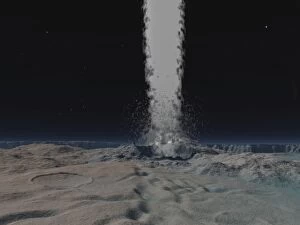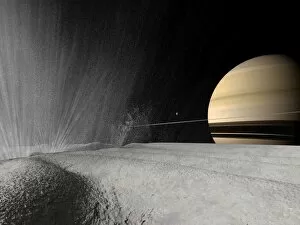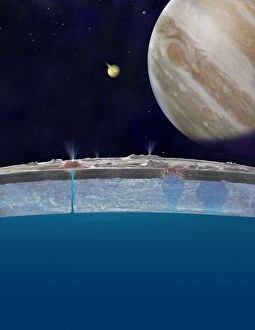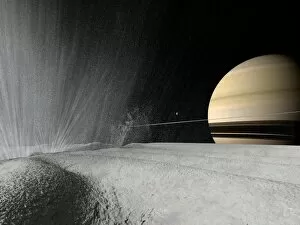Cryovolcano Collection
"Cryovolcano: Unveiling the Frozen Wonders of Celestial Bodies" Pluto, a world once considered barren
All Professionally Made to Order for Quick Shipping
"Cryovolcano: Unveiling the Frozen Wonders of Celestial Bodies" Pluto, a world once considered barren, may harbor hidden secrets as scientists speculate about springs of liquid oxygen beneath its icy surface. Enceladus, Saturn's moon, mesmerizes with geysers near its South Pole that spew out cryovolcanism, revealing an otherworldly spectacle. Delving deeper into the phenomenon, a diagram elucidates the intricate workings behind Enceladus' fountains and their captivating display. Witnessing a rare event on Neptune's moon Triton, an eruption from an ice volcano captivates observers with its majestic beauty amidst the frozen landscape. Known as "The Ice Fountains, " Enceladus continues to astonish as plumes of ice crystals rise from geysers towards sunlight during dawn's arrival. An awe-inspiring illustration showcases the dramatic moment when a geyser erupts on Enceladus' surface, painting a vivid picture of this celestial wonder. The largest moon orbiting Neptune - Triton - enthralls astronauts who witness one of its giant cryogeysers in full force during an extraordinary eruption. Brave explorers venture closer to examine great fissures on Enceladus' surface that serve as birthplaces for these mesmerizing geysers erupting into space. Artwork depicting Europa's vast ocean reminds us that even distant moons possess untold mysteries waiting to be unraveled by future explorations and discoveries.














